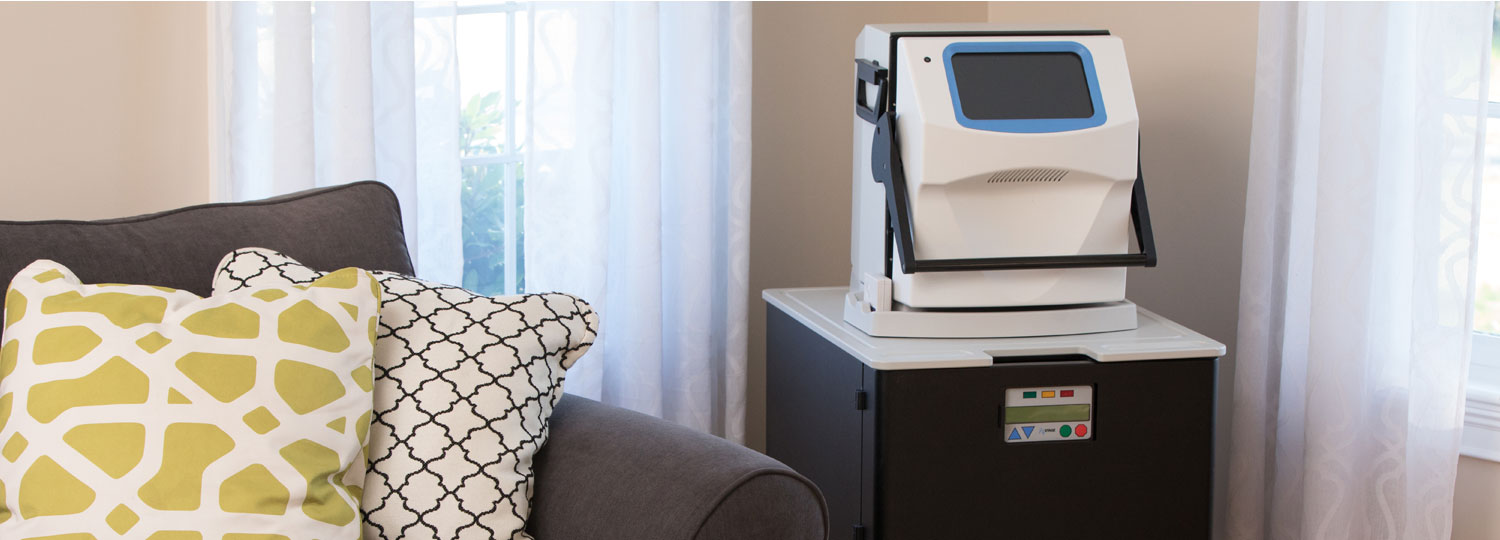Is it possible to perform dialysis treatments alone at home?
Yes, if you and your doctor agree, and with proper planning and training, many patients are able to perform their dialysis therapy alone, in the comfort of their home.
Solo home dialysis, sometimes referred to as self- or independent dialysis, is dialysis therapy administered at home, by yourself, without any required assistance. Kidney disease patients have two therapy options for solo treatment–more frequent home hemodialysis (HHD) and peritoneal dialysis (PD), both of which can offer many clinical and lifestyle benefits compared to traditional three-times weekly in-center hemodialysis (ICHD)1. Since PD is almost always done independently at home, here we will focus more on solo HHD.
What is required to perform solo HHD?
If you and your doctor decide solo HHD is a good option for your health and lifestyle, you will first need a prescription for the therapy. You will also need a NxStage HHD system, dialysis treatment supplies, ancillary treatment supplies, and additional training to perform treatments alone, at home.
Your home training nurse will teach you to administer treatments yourself as well as proper techniques for using the ancillary devices listed below. Videos and other supplemental training materials are available online as well.
- NxStage fluid detection system. This includes the cycler base, extended cycler base, filterholder, and fluid detection sensor. (Your training center will provide this equipment.)
- Venous needle dislodgment device. This device alerts you with an audible alarm in the event of a vascular access blood leak. (Your training center will provide this equipment.)
When can solo HHD treatments be done?
You can perform solo HHD anytime during waking hours, which means you can adapt your dialysis treatments to your schedule and lifestyle, not the other way around.
Are there any additional considerations for patients contemplating solo HHD?
There are some physical limitations that could affect a person’s ability to perform solo home hemodialysis. As always, your doctor and care team should help with these decisions and determine the best approach.
Some patients may feel uneasy about learning to self-cannulate, however, many people prefer self-cannulation once they are trained to do it properly.
Home is the most practical setting to do more frequent HHD
Nieltje had been living with kidney disease for almost 20 years and was determined to to avoid in-center dialysis at all costs.

In-center treatments were difficult for Nieltje to balance in between taking care of her family and herself. As a solo patient, Nieltje has regained her independence and taken control over her life and treatments.
What are some of the possible Benefits of More Frequent HHD ?
(including more frequent solo HHD)
Fluid and toxin removal with more frequent HHD is closer to that of a healthy kidney, which works 24 hours a day, 7 days a week.2

5% Reduction in mortality for each hour that recovery time is reduced7
Talk to a Patient Consultant
Talk to a Patient Consultant today who will answer your questions about the therapy.
Risks and Responsibilities
Patients should review the following information carefully and discuss it with their doctors to decide whether home hemodialysis with NxStage systems is right for them.
Users should weigh the risks and benefits of performing home hemodialysis with NxStage systems.
- Medical staff will not be present to respond to health emergencies that might happen during home treatments, including, among other things, dizziness, nausea, low
blood pressure, and fluid or blood leaks. - Users may not experience the reported benefits of home, more frequent, or nocturnal hemodialysis with the NxStage systems.
- The NxStage systems require a prescription for use.
Users will be responsible for all aspects of their hemodialysis treatment from start to finish.
- Medical staff will not be present to perform home treatments. Users will be responsible for, among other things, equipment setup, needle insertions, responding to and resolving system alarms, system tear-down after treatment, monitoring blood pressure, ensuring proper aseptic technique is followed, and following all the training material and instructions that nurses provide.
Users will need additional resources to perform home hemodialysis.
- Users will need a trained care partner to be present during your treatment at home (unless their doctor prescribes “solo/independent” home hemodialysis, described below).
- Users must have a clean and safe environment for their home treatments.
- Users will need space in their home for boxes of supplies necessary to perform home hemodialysis with NxStage systems.
Certain forms of home hemodialysis have additional risks.
- If a doctor prescribes home hemodialysis more than 3 times a week, vascular access is exposed to more frequent use which may lead to access related complications, including infection of the site. Doctors should evaluate the medical necessity of more frequent treatments and discuss the risks and benefits of more frequent therapy with users.
- If a doctor prescribes “solo/independent” home hemodialysis without a care partner during the day, risks of significant injury or death increase because no one is present to help users respond to health emergencies. If users experience needles coming out, blood loss, or very low blood pressure during solo/independent home hemodialysis, they may lose consciousness or become physically unable to correct the health emergency. Users will need additional ancillary devices and training to perform solo/independent home hemodialysis.
- If a doctor prescribes “nocturnal” home hemodialysis at night while the user and a care partner are sleeping, risks increase due to the length of treatment time and because therapy is performed while the user and a care partner are sleeping. These risks include, among other things, blood access disconnects and blood loss during sleep, blood clotting due to slower blood flow or increased treatment time or both, and delayed response to alarms when waking from sleep. A doctor may need to adjust users’ medications for nocturnal home hemodialysis, including, among other things, iron, Erythropoiesis-Stimulating Agents (ESA), insulin/oral hypoglycemics, anticoagulants, and phosphate binders.
The reported benefits of peritoneal dialysis may not be experienced by all patients.
Peritoneal dialysis does involve some risks that may be related to the patient, center, or equipment. These include, but are not limited to, infectious complications. Examples of infectious complications include peritonitis and exit-site and tunnel infections. Non-infectious complications include catheter complication such as migration and obstruction, peritoneal leaks, constipation, hemoperitoneum, hydrothorax, increased intraperitoneal volume, and respiratory and gastric issues. It is important for healthcare providers to monitor patient prescriptions and achievement of adequate fluid management goals.
Patients should consult their doctor to understand the risks and responsibilities of performing peritoneal dialysis.






